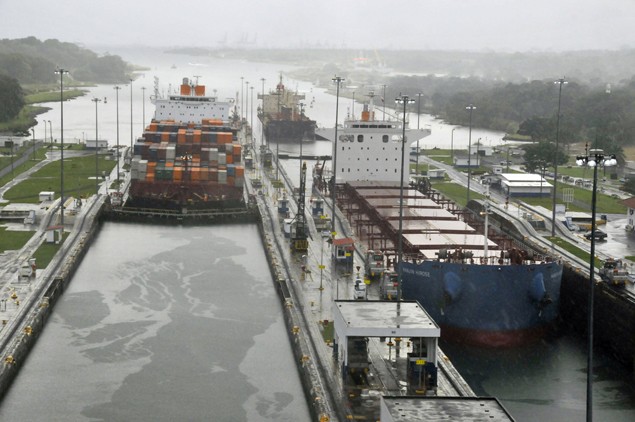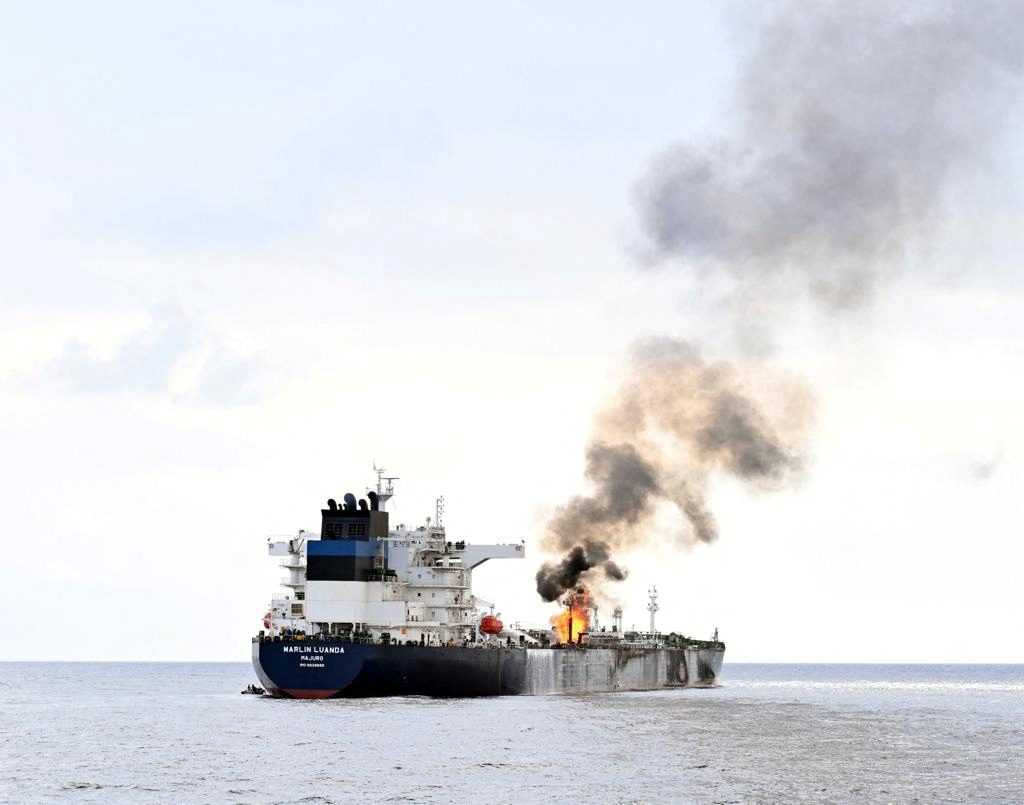(Bloomberg) — Six years after the Panama Canal began a $5.25 billion expansion to capture shipments of Asian-made goods to the U.S. East Coast, the flow of liquefied natural gas in the opposite direction promises to be a better bet.
Shipments of the fuel, along with rising commodity and energy cargoes between the U.S., Latin America and Asia, are likely to provide the largest sources of demand growth when the project is complete in June 2015, Administrator Jorge Luis Quijano said in an interview.
Shipping containerized goods, which generate most business for the 50-mile link, has yet to return to the same level as 2007, two years year before the global economy had its worst recession since World War II.
The shift shows how rising U.S. shale-gas output is reshaping global energy markets. The Panama Canal enlargement is central to the change because the route cuts voyages by more than 7,500 nautical miles (8,500 miles) to Asia, where fuel demand is growing fastest. The waterway, handling 5 percent of world trade and shipping 333 million metric tons in the year to Sept. 30, is used by as many as 14,000 ships a year, connecting 160 countries and 1,700 ports, according to its website.
“This could be a significant boon to our business,” Quijano said in the telephone interview on Jan. 17 from Balboa. “There’s been a lot of interest in going through the expanded Panama Canal with LNG cargo from the Atlantic going to Asia.”
The original plans for a third set of locks at each entrance of the 99-year-old canal were based on capturing extra traffic from larger container ships to grow routes to the U.S. East Coast from Asia, Quijano said. Traffic on the route represents 43 percent of the canal’s transport, up from 11 percent in 2000, Monica Martinez, a canal spokeswoman, said in an e-mailed response to questions.
Unexpected Growth
What the canal didn’t foresee when it planned the expansion was the rise of shale gas, produced from hydraulic fracturing of rocks, Quijano said. The extraction method boosted U.S. gas output by 30 percent in the past five years and so-called tight- oil production by 20 percent, according to BP Plc’s Energy Outlook 2020, released this month. The nation will become a net exporter in 2017, according to Europe’s second-biggest oil company. Liquefaction chills the fuel into a liquid for transport by sea.
The U.S. may boost LNG output to 50 million tons annually by the end of the decade, from zero this year, according to Morgan Stanley. That would make the nation the world’s third-largest producer, after Australia and Qatar, the bank estimated in a Jan. 28 report.
U.S. Exports
The U.S., which currently has one LNG export terminal, in Alaska, will probably permit additional overseas sales because the price of natural gas in the country is cheaper than the cost of producing shale gas, Sverre Bjorn Svenning, a shipping analyst at Fearnley Consultants, said in a Jan. 29 phone interview from Oslo. The Oslo-based unit of shipbroker Fearnley A/S worked as consultants to the canal 10 years ago on projected demand for liquefied bulk cargoes. A U.S. Energy Department- sponsored study in December supported LNG exports.
“The Panama Canal is definitely good news for east Asia, and it’s where the highest global prices for LNG are,” Svenning said. His company is putting together deals to build vessels to ship the fuel that are based on using the canal for long-term charters, he said.
While the U.S. will probably allow exports of LNG, it’s also possible the country will limit overseas sales to curb domestic energy costs, according to Hartland Shipping Services Ltd., a London-based shipping consultant. That could result in a higher proportion of Asian demand being met by Asian suppliers, Hartland said in a Jan. 11 report.
Delayed Project
The expansion project is running late. The completion date of June 2015 is six months later than originally planned when the project was approved in December 2006, Quijano said.
While growth in containerized cargo shipments through the canal slowed last year, the global economy is still expanding. World trade will quicken to 3.8 percent in the current 12 months from 2.8 percent in 2012, according to the International Monetary Fund.
Locks that are wider and deeper will be able to accommodate about another 2,600 dry-bulk ships, oil tankers and LNG carriers, according to fleet data from IHS Fairplay compiled by Bloomberg. About 80 percent of the world fleet of 369 LNG carriers fit the new locks’ dimensions, from less than 10 percent today, the data show.
Colombian Coal
The new dimensions will also allow another 650 container ships in addition to the 3,994 that already fit. While a further 1,697 bulk carriers, hauling coal, iron ore and grains, can also use the them, the largest Capesize vessels won’t be able to transit fully laden because they will sit too deep in the water, according to data compiled by Bloomberg.
The biggest bulk carriers can bring coal from northwest ports in Colombia, the world’s third-largest exporter of power- station coal, to Asia as the short-cut makes them competitive in price against Australia, the second-biggest, once the canal opens, Quijano said.
Growth in transits by laden container ships expanded 2 percent to 3,286 last year, down from a 7.3 percent growth rate in 2011, according to data on the canal’s website. That’s still below the 3,598 tally in 2007. Revenue from those shipments climbed to $955 million from $644 million five years earlier.
The wider locks will more likely boost shipment sizes of soybeans exported to China, the biggest buyer, from ports in the U.S. Gulf, Svenning said. Vessels carrying up to 120,000 tons of cargoes will fit through the wider canal laden with the agricultural commodities, just over double current ships’ capacity, he said. Exports to the Asian country from the U.S. climbed 16 percent to 26 million tons in 2012, Chinese customs data show.
– Michelle Wiese Bockmann, Copyright 2013 Bloomberg.
Unlock Exclusive Insights Today!
Join the gCaptain Club for curated content, insider opinions, and vibrant community discussions.

 Join The Club
Join The Club













